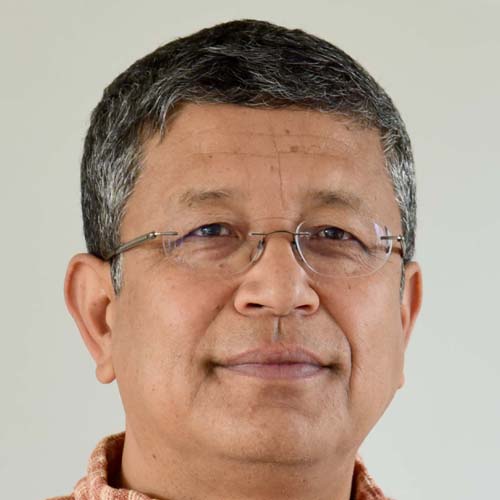Columns
Skirting the issue
On paper, Nepal has made some important strides towards gender equality and inclusion. Yet, in reality, the situation is far from perfect.
Deepak Thapa
Fourteen years ago, Bidya Devi Bhandari, now our president but then a mere member of Parliament, managed to pull off a feat that has perhaps had among the most consequential impact on women’s rights in Nepal; legally at least, since in practice the record is somewhat patchy. Coming close on the heels of the momentous May 18, 2006 parliamentary declaration that set the stage for a new era for the country, a motion for resolution introduced by Bhandari and seconded by a cross-party trio that included two men received unanimous approval in the newly restored parliament following the success of People’s Movement II.
The parliamentary resolution enjoined the political parties to introduce measures Nepali women had been fighting for decades: children being able to claim citizenship through either parent, the repeal of laws that worked against women, an end to violence against women, and a guarantee of a minimum one-third participation in all state bodies. A cent per cent support for anything is a rarity in any democracy, but then those were heady days yet and expansive liberalism was floating around towards everyone, women included.
It was quite unfortunate that Parliament actually had to pass such a resolution just 12 days after it had reduced the king to a cypher, declaring that ‘the Nepali people are the source of state power and Nepal’s sovereignty and state power rests on the Nepali people and the people’s aspirations exhibited in the present people’s movement’. The lawmakers seem to have been conveniently oblivious of the fact that the ‘people’s aspirations’ include those expressed by women as well. That declaration had nothing for them save a single point promising to resolve the citizenship issue, which is something that had a much broader resonance.
Yet, one has to hand it to our politicians for actually following through on their collective resolve agreed to in Parliament then. That same year, a new Citizenship Act and the ponderous-sounding Amending Some Nepal Acts to Maintain Gender Equality Act were enacted, which took care of the first two points in the resolution. The law against domestic violence had to wait three more years but it got through as well. And, arguably, the most visible of all has been the various provisions put in place to include more women in government structures through quotas, starting with the Constituent Assembly Act and the amendment to the Civil Service Act in 2007.
Here, one can wax cynical and remark snidely that had Bidya Bhandari not been Madan Bhandari’s widow, none of this would have come to pass. Or, even that had she not been a close ally of KP Sharma Oli, the current prime minister and a party strongman even then, Bhandari’s proposal would have been dead on arrival. What matters most is what needed to be done was done. And kudos to Bhandari for leading the fight and Oli for his unstinting support.
Which is why the sight of the nine men who make up the Secretariat of the ruling party meeting periodically under the helm of the same Oli is all the more jarring. One cannot imagine that after all the changes the country has been through, they fail to see anything wrong in the composition of the party’s supreme decision-making body. I hope it is only political exigency that has prevented them from doing something to redress it—although even that would not absolve this nonet that has the power to decide the fate of our country.
Force of habit is hard to change at the highest echelons of government. This was made clear once more a few days ago, when the prime minister invited a group of around 25 experts to provide advice on what to do next about Covid-19 pandemic. As reported, the group consisted of economists, planners, gender specialists, social activists, doctors, public health officials and nurses. In photos of the interaction, one can make out perhaps three, or at the most, four women; going by how gendered professions are in Nepal, one can be quite certain they were the nurses and gender specialists. None of them were quoted in the news report either and we do not know what their contribution during the deliberations might have been. Despite a plethora of highly accomplished women in the country in every field, the government could not conceive of going beyond male expertise for advice.
Such omissions become all the more glaring as it becomes increasingly known that the impact of Covid-19 is being felt differently by men and women worldwide. Because of the nature of their jobs, with women more likely to be engaged in the service sector that requires personal interactions, they are more likely to have been let go. Underscoring other challenges, Nahla Valji, gender adviser to the UN Secretary-General, has pointed out: ‘The care work in the home has really grown exponentially with children out of school. We have elder care needs that have increased, we have health systems that are overwhelmed and people who are sick and still require assistance that are now at home. And historically, traditionally, these responsibilities have fallen on the shoulders of women in the home…[W]omen do more of the work in the home than men...These are hours that could be spent on income generation. It’s at the heart of the motherhood penalty, wage inequality, structural biases in recruitment and promotion of women and jobs—and the pandemic is really making visible’.
Most of the focus in Nepal with regard to gender relations in this period has been on domestic violence, and rightly so. But, other factors will increasingly come into play—such as differentials in earnings. According to the Nepal Labour Force Survey of 2017-18, the average monthly income of Nepali workers is Rs17,809 per month but men make Rs5,834 more than women. That disparity will only grow as more women are forced to stay home, a fact likely to be even more pronounced with hundreds of thousands of men coming back to Nepal or now at home from internal destinations, and all looking for jobs both in the formal sector and the informal.
The Labour Force Survey also showed that compared to only 19 percent of boys, nearly half of all girl children are involved in housework, a proportion that can only have gone up during the lockdown, with implications beyond physical exhaustion such as being able to catch up on what schoolwork is going on. There is also little recognition of what the presence of former migrant men will mean for gender equality at home and society. For instance, research has shown that with the menfolk away, women had willy-nilly become more engaged in communal activities such as forest users’ groups. That trend is likely to be reversed as men assume their traditionally sanctioned roles. All the hard work towards achieving gender parity is likely to be pushed back by years, if not decades.
These are some of the examples to argue for more women’s voices at the decision-making table. That is a realisation that seems to have eluded even one-time champion Oli.




 8.12°C Kathmandu
8.12°C Kathmandu















